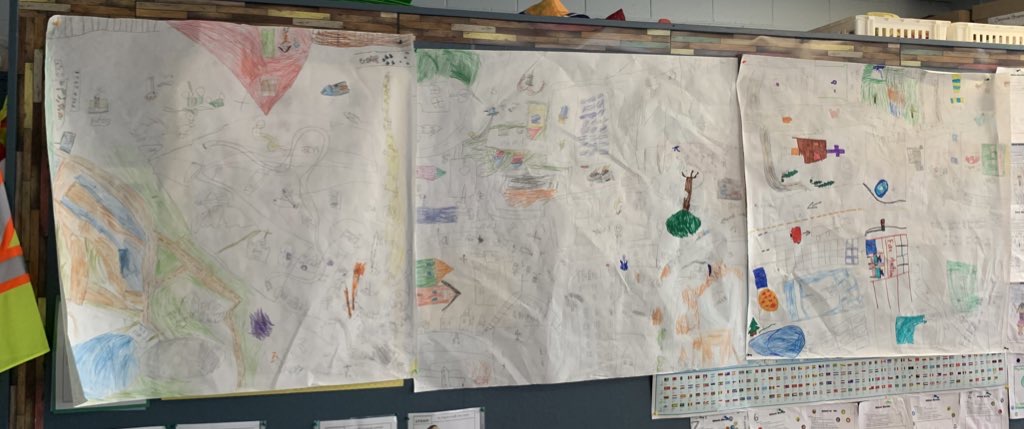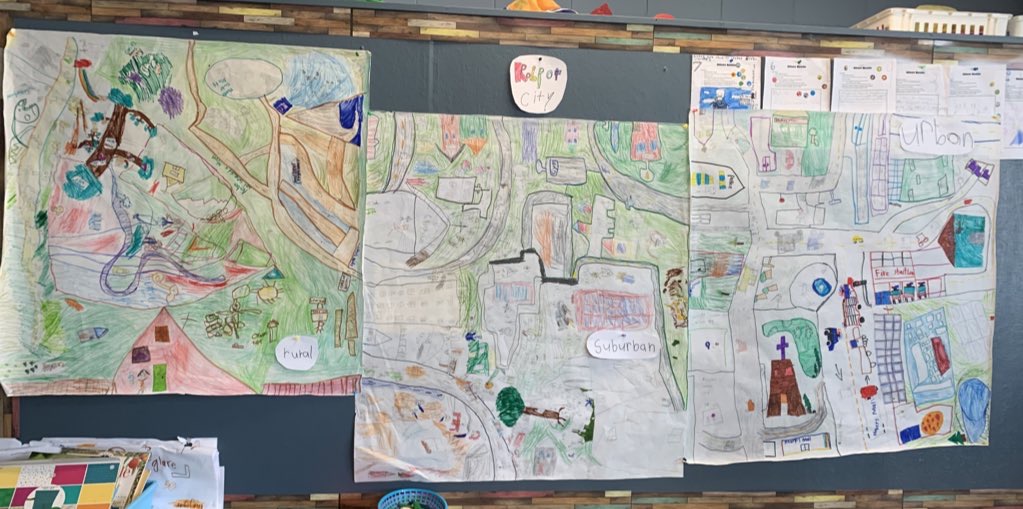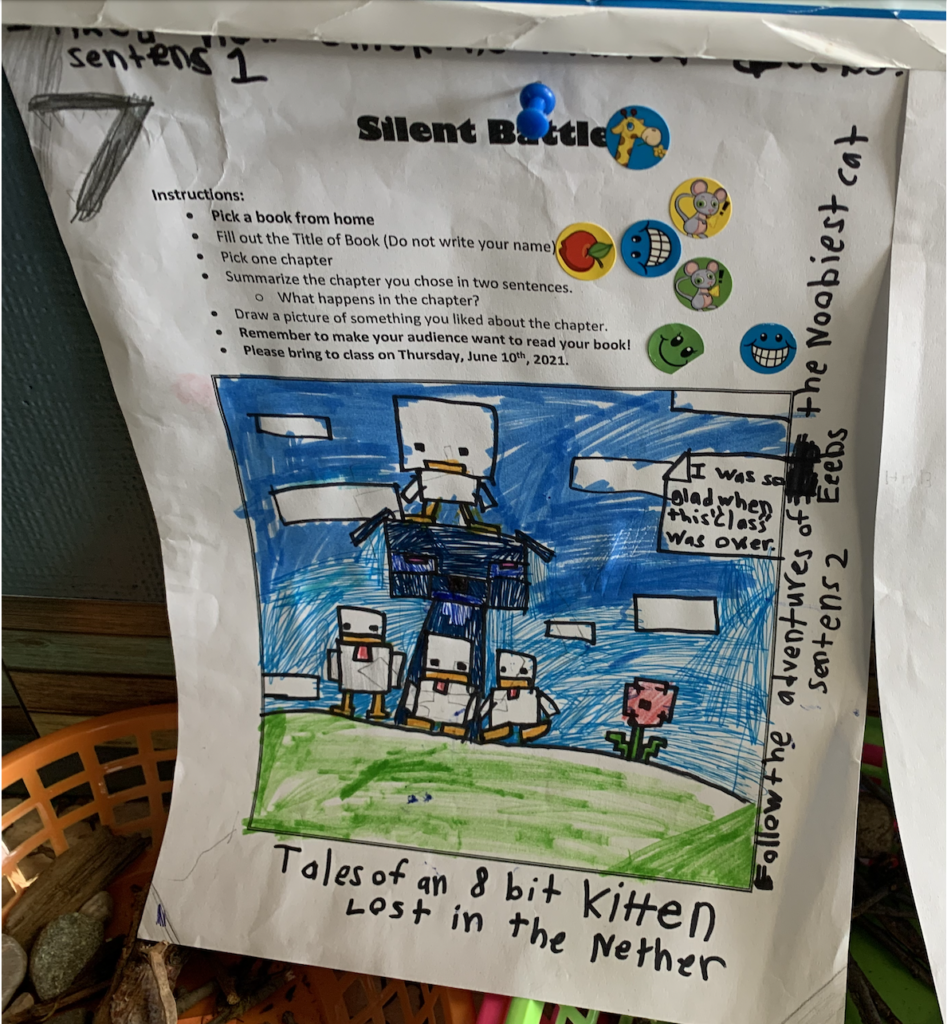When I reflect on my four-week practicum, I realize that several things I learned, I could never have expected or learned outside of the classroom. For example, I learned that time management is a rigorous activity. Students, when given the floor, will talk and talk. I learned quickly to give specific instructions when asking a question: “Give one reason your book cover makes you want to read.” I learned that I had to qualify questions with “one example” or “one reason” to ensure that we stayed on time. Also, I learned that I had to be active in choosing students to answer questions. Sometimes this meant that I had to wait for more hands to be raised. I learned to not jump to the first students who raise their hands as they are the ones always raising their hands. To give more students voice, I used patience and courteous choices. I also learned that the pace of a class is very important. I found out very quickly that I need to maintain a certain flow meaning that I have to make sure the students’ attention is maintained throughout the lesson. In comparison to my CT, my time management had to be very tight as I do not have extra days to extend lessons. On one occasion I should have finished the exercise 10 minutes early and had time for a meaningful conclusion and debrief of their work. As I felt I need to follow my lesson plan, I lost sight that students need to hear a clear conclusion to a lesson. By the next days, the chance to have made a meaningful point is diminished.
I did not realize I would have to prepare to write on the board. I learned that writing on the board is harder than it looks. First, my handwriting, which is usually neat, looks terrible on the board. I am in the process of reinventing my writing style to be clear on the board. I also learned that it is difficult to talk and write at the same time. I have to prepare clear notes that state exactly what I plan to write, so that I can talk and write at the same time. Without rigorous planning, if I try and think, talk, and write on the board, I produce a mess.
I also realized the importance of consistency. For example, I learned that it is important to use the language used in the BC Curriculum. For a mathematics lesson, I used a text book that referred to Block Unit 1s and 10s as “minis” and “sticks.” In class, the students only new “ones” and “tens,” which is what is used in the BC Curriculum. My PE pointed this out to me, and now I see inconsistencies in language as potential trouble for the learning process. For example, during the Communities Unit, I used Urban, Suburban, and Rural, and I gave clear definitions for each term. In the final lesson, the students were able to demonstrate understanding of the terms by drawing a map of one of the communities. It has been reinforced that clarity is an important part of the learning process.
In fact, I posted the completed maps on the board. I said, “Look! Notice how the different types of communities connect to each other.” We had a meaningful discussion about communities to finish the unit. (See the attached Communities Map)


Theoretically, I know criticism is important. During my practicum, I reinforced the importance of listening to and using criticism to improve myself. My PE noticed I was dropping “Rs” when I said certain words. As English is not my first language, I have certain issues that come up, especially when I am nervous. My loved ones forget to correct me when I drop “Rs,” so it was important that my PE pointed it out to me. I am dedicated to always trying my best to be clear and correct. By telling me that I was making this mistake, I was able to focus on it and improve it the next lesson.
I learned that I am a strong listener, and that I adapt quickly to my students. As I plan each lesson carefully, I can see what works and adapt the next day to make sure I am giving the students the best opportunity to learn. I think I have a great connection with my students. I think they can feel that I want them to feel curious, adventurous, and willing to take risks. For example, in an exercise making 3D shapes, a spectrum student could not use the toothpicks and Playdough to make a cube, but the student could use the Playdough to make a cube. I encouraged the student, noticing the student’s engagement with the creation and the counting of the sides. I also see when students are thriving, and I noticed that one student had put extra work into a book battle, and I praised that student to encourage that level of work. Just by noticing the effort, I can see that the student felt empowered. (See the attached Book Battle handout)

I have not had a chance to work on formal assessments yet, but I have attended a school planning session and my CT has given me useful information on how to approach formal assessments. In other words, I am interested in both the long term planning of the school as well as each student’s progress. Moreover, I expected to learn more about redirection and assessment strategies as well as classroom management and warm up activities, and I have. However, the things I did not expect to learn have made a strong impression on me. I have gained a lot from my CT and PE’s mentorship in respect to setting personal goals: Inclusion of shy and quiet students; Clarity with pronunciation; Timing, especially with lesson conclusions and transitions; and Pace, especially in context to student needs. I feel that I have had the opportunity to work on all of these points (and others), and I am excited about my next practicum.
Ian Landy
June 17, 2021 — 2:56 pm
Wow! That’s a powerful reflection! Great synthesis on your practicum experience! Looking forward to seeing how you continue as a teacher!